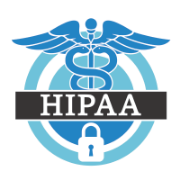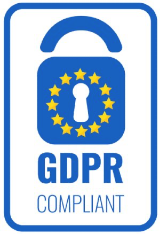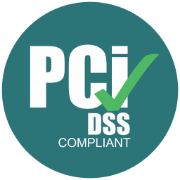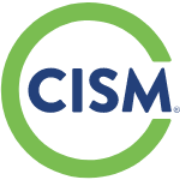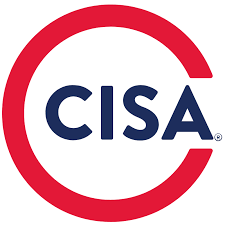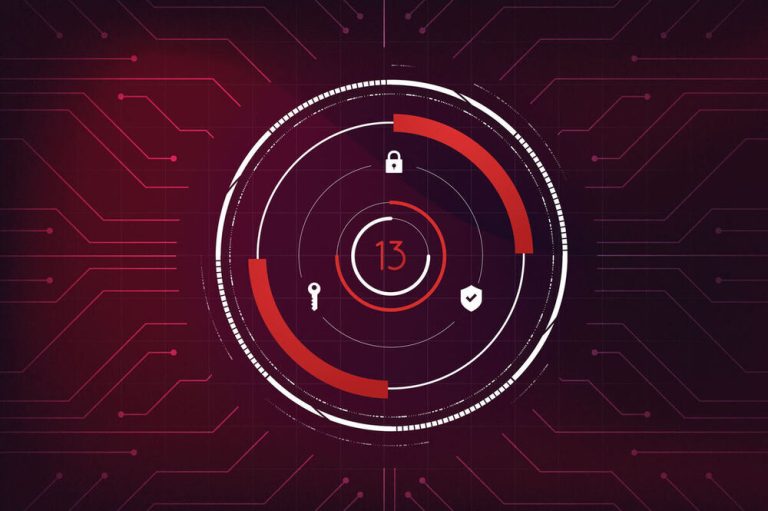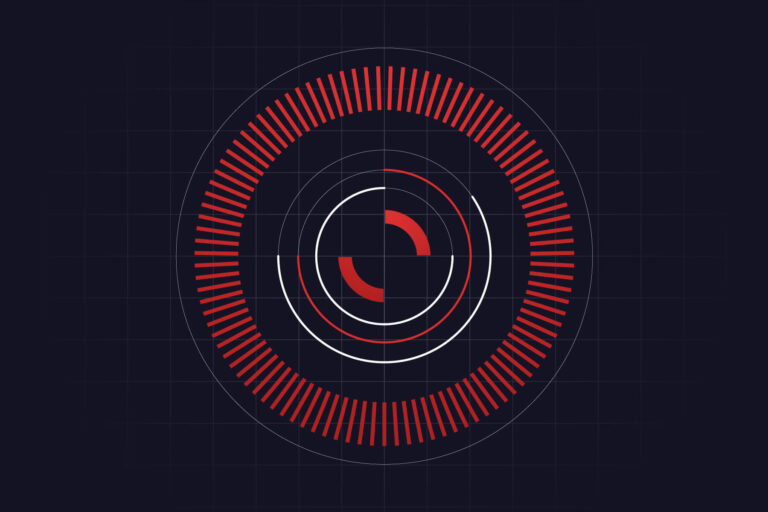OVERVIEW
The PCI DSS standards are maintained by the Payment Card Industry Security Standards Council (PCI SSC), which was established in 2006 by major credit card companies, including Visa, Mastercard, American Express, Discover, and JCB International. The council is responsible for developing and updating the standards, as well as providing guidance and support to businesses and organizations that handle credit card data.
The PCI DSS standards apply to all businesses that accept credit card payments, regardless of their size or location. This includes merchants, service providers, processors, and other entities that handle credit card data. Businesses must comply with the standards if they want to accept credit card payments from any of the major credit card brands.
PCI DSS compliance is divided into four levels, based on the volume of credit card transactions processed by a business in a year. Level 1 is the highest level of compliance and applies to businesses that process more than 6 million credit card transactions per year. Level 4 is the lowest level and applies to businesses that process fewer than 20,000 transactions per year.
To achieve PCI DSS compliance, businesses must undergo a rigorous assessment process that includes a review of their policies, procedures, systems, and controls for handling credit card data. This assessment can be conducted by an external Qualified Security Assessor (QSA) or by an internal security team that is certified by the PCI SSC.
Businesses that fail to comply with the PCI DSS standards can face fines and penalties, as well as damage to their reputation and loss of customer trust. In addition, businesses that suffer a data breach or security incident involving credit card data may be liable for damages and face legal action.
Overall, the PCI DSS standards are an important set of requirements for businesses that accept credit card payments. By following these standards and maintaining a secure environment for credit card transactions, businesses can protect against data breaches, fraud, and other security threats, and maintain the trust of their customers.
PCI DSS Levels
There are different requirements for PCI DSS based on the volume or amount of yearly transactions that an organization processes or stores. The requirements are divided into four levels based on the volume of transactions processed or stored annually by an organization:
Level 1: Merchants processing over 6 million transactions annually, or any merchant deemed high-risk by the payment card brands.
Level 2: Merchants processing 1 million to 6 million transactions annually.
Level 3: Merchants processing 20,000 to 1 million e-commerce transactions annually.
Level 4: Merchants processing fewer than 20,000 e-commerce transactions annually, or any merchant processing up to 1 million non-e-commerce transactions annually.
The requirements for each level are different, with Level 1 having the most stringent requirements and Level 4 having the least stringent. For example, Level 1 merchants are required to have an annual on-site assessment by a Qualified Security Assessor (QSA), while Level 4 merchants can conduct a self-assessment questionnaire.
It’s important to note that the payment card brands may determine an organization’s level based on their own risk assessment, even if the organization falls into a different level based on transaction volume. Organizations should work with their payment card brands to determine their appropriate level and ensure that they are meeting the correct requirements.
STEP-BY-STEP GUIDE FOR PCI DSS Compliance
Achieving PCI DSS compliance can be a complex process, but here is a step-by-step guide to help you understand the general process:
Step 1: Determine Your PCI DSS Compliance Level.
The first step to achieving PCI DSS compliance is to determine which compliance level applies to your business.
Step 2: Identify and Document Your Cardholder Data Environment.
The next step is to identify all the systems, networks, and processes that handle credit card data within your organization. This is called your cardholder data environment (CDE). You will need to document your CDE, including all the hardware and software components, the flow of cardholder data, and the individuals who have access to this data.
Step 3: Conduct a PCI DSS Gap Analysis.
Once you have identified your CDE, you will need to conduct a gap analysis to determine which PCI DSS requirements you already meet and which ones you need to address. You can use the Self-Assessment Questionnaires (SAQs) provided by the PCI SSC to help you with this process.
Step 4: Develop a Remediation Plan Based on the results of your gap analysis.
You will need to develop a remediation plan that outlines the steps you need to take to address any gaps in your PCI DSS compliance. This plan should include specific actions, timelines, and responsible individuals or teams.
Step 5: Implement Security Controls Once you have a remediation plan in place.
You will need to implement the necessary security controls to address the gaps in your compliance. These may include technical controls such as firewalls, encryption, and access controls, as well as policies and procedures to govern the handling of cardholder data.
Step 6: Test and Validate Security Controls After you have implemented your security controls.
You will need to test and validate them to ensure that they are working properly and effectively. This may include vulnerability scanning, penetration testing, and other types of security testing.
Step 7: Submit Compliance Documentation.
Once you have validated your security controls, you will need to submit your compliance documentation to your acquiring bank or payment processor. This documentation may include a completed SAQ, a report on compliance (ROC), and other supporting documents.
Step 8: Maintain Ongoing Compliance.
Finally, it’s important to remember that achieving PCI DSS compliance is an ongoing process, not a one-time event. You will need to maintain your compliance by regularly monitoring and testing your security controls, updating your policies and procedures as needed, and staying up-to-date with changes to the PCI DSS standards.
Keep in mind that this is a general guide and the specific steps you need to take will depend on the size, complexity, and nature of your business. You may also need to work with external consultants or assessors to help you achieve and maintain PCI DSS compliance.
WHO DOES THE PCI DSS AFFECT?
The PCI DSS (Payment Card Industry Data Security Standard) affects any organization that accepts payment cards and processes, stores, or transmits cardholder data. This includes merchants, service providers, payment processors, and other entities that handle payment card data.
The PCI DSS standards apply to all payment card brands, including Visa, Mastercard, American Express, Discover, and JCB International. As a result, any organization that accepts payment cards from any of these brands must comply with the PCI DSS standards.
It’s worth noting that the PCI DSS requirements apply to all payment channels, including brick-and-mortar retail stores, e-commerce websites, mobile payment applications, and other payment channels. The level of compliance required will depend on the volume of payment card transactions processed by the organization, with higher levels of compliance required for larger organizations that process more payment card transactions.
Overall, the goal of the PCI DSS is to help protect payment card data and prevent fraud, by ensuring that organizations that handle payment card data follow strong security practices and maintain a secure environment for payment card transactions.
WHAT ARE THE PCI DSS REQUIREMENTS?
The PCI DSS has 12 requirements, which are designed to help organizations protect payment card data and prevent fraud. Here is a brief overview of each requirement:
-
Build and Maintain a Secure Network and Systems
This requirement involves implementing and maintaining secure network architecture and configurations, including firewalls, routers, and other network security devices. Organizations must also implement security measures to protect against malware and other threats.
-
Protect Cardholder Data
Organizations must protect cardholder data through encryption, truncation, and other security measures, both in storage and during transmission over networks.
-
Maintain a Vulnerability Management Program
This requirement involves implementing and maintaining processes to identify and remediate vulnerabilities in systems and applications, including regular scanning for vulnerabilities and timely patching of identified vulnerabilities.
-
Implement Strong Access Control Measures
Organizations must implement strong access control measures, including unique user IDs, strong passwords, and multi-factor authentication. They must also limit access to cardholder data on a need-to-know basis.
-
Regularly Monitor and Test Networks
Organizations must regularly monitor and test their networks and systems to detect and respond to security incidents, as well as to validate the effectiveness of their security controls.
-
Maintain an Information Security Policy
Organizations must develop and maintain a comprehensive information security policy that addresses all aspects of payment card data security, including access control, network security, and incident response.
-
Restrict Access to Cardholder Data
Organizations must restrict access to cardholder data to only those individuals who have a legitimate need to access it. They must also track and monitor all access to cardholder data.
-
Assign a Unique ID to Each Person with Computer Access
Organizations must assign a unique user ID to each individual with computer access, and they must authenticate those individuals before granting access to payment card data.
-
Restrict Physical Access to Cardholder Data
Organizations must restrict physical access to cardholder data, including secure storage of cardholder data and restricting access to authorized personnel only.
-
Regularly Monitor and Test Security Systems and Processes
Organizations must regularly monitor and test their security systems and processes to ensure that they are effective and to identify and remediate vulnerabilities.
-
Maintain a Secure Network and Systems
Organizations must maintain a secure network and systems, including implementing security controls to protect against malware and other threats, and regularly updating and patching systems and software.
-
Maintain an Incident Response Plan
Organizations must develop and maintain an incident response plan that outlines the steps to be taken in the event of a security incident or breach, including notifying appropriate parties and conducting a post-incident review.
These requirements are designed to help organizations protect payment card data and prevent fraud. The specific steps needed to comply with each requirement will depend on the size, complexity, and nature of the organization and the payment card data it handles. The PCI DSS standards provide guidance and best practices to help organizations achieve and maintain compliance.
HOW IS THE PCI DSS COMPLIANCE ENFORCED?
PCI DSS compliance is enforced by the payment card brands (Visa, Mastercard, American Express, Discover, and JCB International). These brands require that any organization that accepts payment cards and processes, stores, or transmits cardholder data comply with the PCI DSS standards.
The payment card brands typically enforce compliance through a variety of mechanisms, including:
-
Assessments: Payment card brands may require organizations to undergo periodic assessments to verify compliance with the PCI DSS standards. Depending on the volume of payment card transactions processed, these assessments may be conducted by the organization itself, by an external Qualified Security Assessor (QSA), or by an internal Security Assessor (ISA).
-
Fines and Penalties: Payment card brands may impose fines and penalties on organizations that fail to comply with the PCI DSS standards. These fines can be significant and can also include increased transaction fees or the loss of the ability to accept payment cards altogether.
-
Remediation: Payment card brands may require organizations to remediate any identified security vulnerabilities or weaknesses in their systems and processes in order to maintain compliance with the PCI DSS standards.
-
Revocation of Compliance: Payment card brands may revoke an organization’s compliance status if they fail to maintain compliance with the PCI DSS standards. This can result in the loss of the ability to accept payment cards or increased transaction fees.
In general, compliance with the PCI DSS standards is enforced by the payment card brands in order to protect payment card data and prevent fraud. Organizations that handle payment card data must comply with the standards in order to maintain the trust of their customers and the ability to accept payment cards.
DOES THE PCI APPLY TO ANY SPECIFIC INDUSTRIES?
The PCI DSS (Payment Card Industry Data Security Standard) applies to all organizations that accept payment cards and process, store, or transmit cardholder data, regardless of industry or size. This includes merchants, service providers, and any other entity that accepts payment cards.
However, there may be some industries or sectors that have additional regulatory requirements or guidelines related to payment card data security. For example, the healthcare industry is subject to the Health Insurance Portability and Accountability Act (HIPAA) regulations, which include requirements for protecting payment card data in addition to other types of protected health information.
Similarly, the financial services industry may be subject to regulations from various government agencies, such as the Federal Financial Institutions Examination Council (FFIEC) or the Office of the Comptroller of the Currency (OCC), that include requirements for payment card data security.
Overall, while the PCI DSS standards apply to all organizations that accept payment cards, there may be additional regulations or guidelines that apply to specific industries or sectors. Organizations should be aware of all relevant requirements and ensure that they are complying with all applicable regulations and standards.
What are the benefits of being PCI compliant?
There are several benefits to being PCI DSS (Payment Card Industry Data Security Standard) compliant. These benefits include:
-
Reduced Risk of Data Breaches: Compliance with the PCI DSS standards can help to identify and address potential vulnerabilities and weaknesses in your payment card data security, reducing the risk of data breaches and associated costs and penalties.
-
Enhanced Reputation and Customer Trust: Compliance with the PCI DSS standards demonstrates your commitment to protecting payment card data and can enhance your reputation and the trust of your customers.
-
Increased Efficiency and Cost Savings: Compliance with the PCI DSS standards can lead to increased efficiency and cost savings by streamlining payment card data security processes and reducing the need for additional security measures.
-
Reduced Liability and Insurance Costs: Compliance with the PCI DSS standards can reduce liability and insurance costs associated with payment card data breaches.
-
Competitive Advantage: Compliance with the PCI DSS standards can give you a competitive advantage over organizations that are not compliant, demonstrating to customers and partners that you take payment card data security seriously.
-
Simplified Compliance with Other Regulations: Compliance with the PCI DSS standards can help to simplify compliance with other data security and privacy regulations, such as GDPR or HIPAA, as many of the requirements overlap.
Compliance with the PCI DSS standards can bring significant benefits to your organization, including improved payment card data security, increased customer trust, enhanced efficiency and cost savings, reduced liability and insurance costs, and a competitive advantage over organizations that are not compliant.
WHAT HAPPENS IF MY COMPANY IS NOT IN COMPLIANCE WITH PCI DSS?
If your company is not in compliance with PCI DSS (Payment Card Industry Data Security Standard), it may face a number of consequences, including:
-
Penalties and Fines: The payment card brands may impose penalties and fines for non-compliance with PCI DSS standards. These fines can be significant, ranging from hundreds to thousands of dollars per month, depending on the severity of the non-compliance.
-
Increased Risk of Data Breaches: Non-compliance with PCI DSS standards can increase the risk of data breaches and associated costs, including costs associated with forensic investigations, card reissuance, and legal settlements.
-
Damage to Reputation and Loss of Customer Trust: Non-compliance with PCI DSS standards can damage your reputation and erode customer trust, leading to decreased sales and revenue.
-
Loss of Business Opportunities: Non-compliance with PCI DSS standards can result in the loss of business opportunities, as some partners and customers may require proof of compliance before doing business with your organization.
-
Increased Compliance Costs: Non-compliance with PCI DSS standards can result in increased compliance costs, as your organization may need to invest in additional security measures or engage external consultants to address areas of non-compliance.
Non-compliance with PCI DSS standards can have serious consequences for your organization, including financial penalties, increased risk of data breaches, damage to reputation, loss of business opportunities, and increased compliance costs. It is important to take PCI DSS compliance seriously and work to ensure that your organization is fully compliant with all applicable standards and requirements.
CAN WE ACHIEVE PCI DSS COMPLIANCE ON OUR OWN?
Achieving PCI DSS (Payment Card Industry Data Security Standard) compliance can be a complex and challenging process, and it may be difficult to achieve full compliance on your own, especially for larger organizations. However, it is possible for some smaller organizations with limited resources and a relatively simple payment card data environment to achieve compliance on their own.
The PCI DSS standards are designed to be flexible and scalable to meet the needs of organizations of different sizes and levels of complexity. However, achieving compliance requires a thorough understanding of the requirements, as well as a comprehensive approach to implementing the necessary security controls and processes.
If you choose to pursue PCI DSS compliance on your own, it is important to follow a structured approach that includes the following steps:
-
Assess Your Current Environment: Conduct a thorough assessment of your current payment card data environment to identify potential vulnerabilities and gaps in compliance.
-
Identify Applicable Requirements: Review the specific PCI DSS requirements that apply to your organization and determine the steps you need to take to achieve compliance.
-
Develop and Implement a Compliance Plan: Develop a detailed compliance plan that outlines the specific steps you will take to achieve compliance, including implementing necessary security controls and processes.
-
Monitor and Test Your Environment: Regularly monitor and test your payment card data environment to ensure ongoing compliance with PCI DSS standards.
-
Maintain Compliance: Continuously review and update your compliance plan and processes to maintain compliance with evolving PCI DSS standards and requirements.
It is important to note that achieving and maintaining PCI DSS compliance can be a time-consuming and resource-intensive process, and it may be beneficial to work with a qualified security assessor (QSA) or a third-party compliance provider to ensure that you are fully compliant with all applicable requirements.
WHAT IS THE TYPICAL COST FOR achieving PCI compliance?
The cost of achieving Payment Card Industry Data Security Standard (PCI DSS) compliance can vary widely depending on a number of factors, including the size and complexity of the organization’s payment card data environment, the current state of the organization’s security controls and infrastructure, and the scope of the compliance assessment.
Some of the costs associated with achieving PCI DSS compliance may include:
-
Internal resource costs – such as the time and effort required by internal staff to prepare for and participate in the compliance assessment process.
-
External consultant costs – such as fees paid to a Qualified Security Assessor (QSA) or other external consultant to perform the compliance assessment.
-
Infrastructure and security upgrades – such as the cost of purchasing and implementing new security technologies, or upgrading existing infrastructure to meet the requirements of the PCI DSS standards.
-
Training and education costs – such as the cost of providing training and education to employees on security best practices and PCI DSS compliance requirements.
-
Compliance maintenance costs – such as the ongoing costs associated with maintaining compliance with the PCI DSS standards over time.
The actual cost of achieving PCI DSS compliance will depend on the unique circumstances of each organization, and it is difficult to provide a general estimate of costs. However, it is important to note that achieving and maintaining compliance with the PCI DSS standards can be a significant investment, both in terms of time and financial resources. Organizations should carefully consider the costs and benefits of achieving PCI DSS compliance before embarking on the compliance process.
At Prodigy 13 we can help you get through the PCI DSS process with competitive and flexible pricing model with 100% success guarantee! For more information and free compliance assessment please review our Managed and Assisted compliance services.
WHAT ARE THE DIFFERENCES BETWEEN PCI DSS AND SOC 2?
PCI DSS and SOC 2 are both security compliance frameworks that are used to assess and validate the security posture of organizations. However, there are some key differences between the two frameworks.
-
Focus: The primary focus of PCI DSS is on the protection of payment card data, while the primary focus of SOC 2 is on the protection of sensitive data related to the organization’s business operations.
-
Applicability: PCI DSS applies specifically to organizations that handle payment card data, while SOC 2 is applicable to a broader range of organizations that handle sensitive data.
-
Compliance process: The compliance process for PCI DSS is more prescriptive, with specific requirements and testing procedures that must be followed. SOC 2 is more flexible, with general criteria that organizations must meet, but with greater flexibility in how those criteria are met.
-
Auditing process: PCI DSS requires an annual external audit by a Qualified Security Assessor (QSA), while SOC 2 allows for a wider range of auditing options, including self-assessments, third-party assessments, or a combination of the two.
-
Reporting: The reporting requirements for PCI DSS are more standardized, with specific reporting templates that must be used. SOC 2 reporting is more flexible, with a range of reporting options available depending on the needs of the organization.
In general, while there are some similarities between PCI DSS and SOC 2, the two frameworks are designed to address different security concerns and have different compliance processes and reporting requirements. Organizations that are subject to both frameworks may need to develop separate compliance programs to address the unique requirements of each standard.
WHAT ARE THE DIFFERENCES BETWEEN PCI DSS AND NIST CSF?
PCI DSS and NIST CSF are two widely used frameworks for information security and compliance. Although there is some overlap between the two frameworks, there are several key differences between them.
-
Focus: The primary focus of PCI DSS is on the protection of payment card data, while the primary focus of NIST CSF is on the overall security and risk management of an organization.
-
Applicability: PCI DSS applies specifically to organizations that handle payment card data, while NIST CSF is applicable to a broad range of organizations regardless of their industry.
-
Compliance process: The compliance process for PCI DSS is more prescriptive, with specific requirements and testing procedures that must be followed. NIST CSF is more flexible, with general criteria that organizations can use to guide their security programs.
-
Maturity model: NIST CSF is based on a maturity model that allows organizations to assess and improve their security posture over time. PCI DSS does not have a formal maturity model.
-
Reporting: PCI DSS requires annual reporting to be submitted to the payment card brands, while NIST CSF does not have any specific reporting requirements.
In general, while there are some similarities between PCI DSS and NIST CSF, the two frameworks are designed to address different security concerns and have different compliance processes and reporting requirements. Organizations that are subject to both frameworks may need to develop separate compliance programs to address the unique requirements of each standard.
PCI DSS VS HIPAA
PCI DSS and HIPAA are two separate compliance standards that are designed to protect sensitive information. PCI DSS focuses on securing credit card data, while HIPAA focuses on protecting personal health information (PHI) and electronic protected health information (ePHI).
Here are some of the key differences between PCI DSS compliance requirements and HIPAA compliance requirements:
-
Scope: The scope of PCI DSS is narrower than HIPAA. PCI DSS only applies to organizations that accept credit card payments, while HIPAA applies to healthcare providers, insurers, and their business associates that handle PHI and ePHI.
-
Controls: The security controls required for PCI DSS and HIPAA are different. PCI DSS has specific requirements for securing credit card data, such as encryption, access controls, and network segmentation. HIPAA has a broader set of requirements that cover administrative, physical, and technical safeguards, including access controls, risk assessments, and security incident response.
-
Penalties: The penalties for non-compliance with PCI DSS and HIPAA are different. PCI DSS non-compliance can result in fines from the credit card companies, loss of reputation, and increased risk of data breaches. HIPAA non-compliance can result in civil and criminal penalties, including fines, damages, and even imprisonment.
-
Audits: PCI DSS compliance requires annual self-assessment or external assessment by a Qualified Security Assessor (QSA) or an Internal Security Assessor (ISA). HIPAA compliance requires periodic audits and reviews by the Department of Health and Human Services (HHS) and potential sanctions in the event of non-compliance.
It’s important to note that some organizations may be subject to both PCI DSS and HIPAA requirements if they handle credit card information and PHI/ePHI. In these cases, organizations will need to ensure they comply with both sets of standards to adequately protect sensitive information.
At Prodigy 13 we can help you achieve 100% compliance with PCI DSS, SOC 2, and HIPAA. For more information and for free compliance assessment, please review our Managed and Assisted compliance services. or simply get a Quick Quote.

